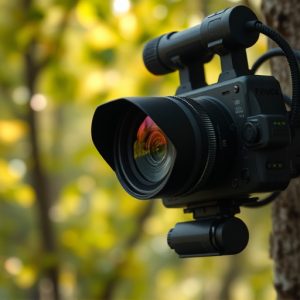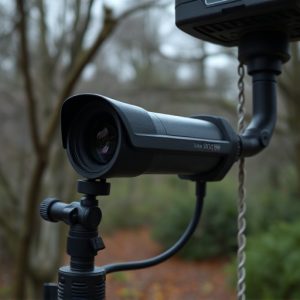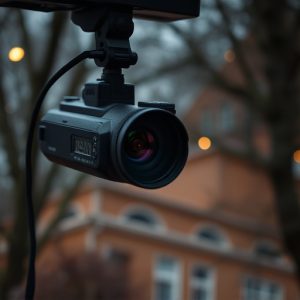Protect Kids: Micro Camera Detection & RF Sweep Guide
Micro cameras, or spy cameras, offer parents a discreet yet powerful tool for child safety by remote…….
Micro cameras, or spy cameras, offer parents a discreet yet powerful tool for child safety by remotely monitoring activities through video and audio signals. In today's digital era, these tiny devices can be concealed within everyday objects, providing security but relying on RF (Radio Frequency) detector sweeps to ensure privacy. A guide teaches readers how to detect hidden micro cameras by identifying potential hiding spots, preparing equipment, scanning areas for RF signals, and recording findings to proactively protect children in sensitive environments while balancing surveillance with legal and ethical responsibilities.
In today’s digital age, parents must stay vigilant against hidden threats like micro cameras, often used for malicious surveillance. Understanding these tiny but powerful devices is crucial for child protection. This comprehensive guide delves into the world of micro cameras and RF detector sweeps, equipping parents with essential knowledge to safeguard their children. From identifying common types to responsible legal use, we provide a step-by-step tutorial for effective detection, ensuring both peace of mind and ethical practices.
- Understanding Micro Cameras: A Parent's Guide to Child Safety
- The Importance of RF Detector Sweep for Hidden Cameras
- Step-by-Step Tutorial: Detecting Hidden Micro Cameras
- Common Types of Micro Cameras and Their Detection Methods
- Legal and Ethical Considerations: Using RF Detectors Responsibly
Understanding Micro Cameras: A Parent's Guide to Child Safety
Micro cameras, often referred to as hidden or spy cameras, are tiny devices that offer parents a powerful tool for ensuring child safety. These micro cameras for child protection can be discreetly placed in various environments, such as playrooms, bedrooms, or even attached to toys, allowing parents to monitor their children’s activities remotely. With the ability to transmit video and audio signals, they enable parents to stay connected and informed about their kids’ surroundings.
For parents concerned about their child’s well-being, understanding micro cameras can be a game-changer. By installing these devices, parents gain a layer of protection, enabling them to identify potential hazards or unusual behaviors. This technology allows for proactive monitoring, ensuring that children are safe and secure while engaging in everyday activities.
The Importance of RF Detector Sweep for Hidden Cameras
In today’s digital age, micro cameras have become powerful tools for various purposes, including child protection. These tiny devices can be hidden in everyday objects, offering a sense of security and surveillance. However, their effectiveness depends heavily on the use of an RF (Radio Frequency) detector sweep. An RF detector is crucial for identifying and locating hidden cameras that transmit data wirelessly, which is common in many micro camera systems. By performing an RF sweep, users can detect and neutralize these hidden devices, ensuring privacy and safety.
The process involves scanning a specific frequency range to identify radio signals emitted by the target device. This method allows individuals to take proactive measures against potential privacy breaches. Whether it’s safeguarding children, securing homes, or monitoring sensitive environments, an RF detector sweep is an indispensable tool in the world of micro cameras for child protection and privacy enforcement.
Step-by-Step Tutorial: Detecting Hidden Micro Cameras
Detecting hidden micro cameras is a crucial step in ensuring child protection and privacy. This step-by-step tutorial guides you through the process using an RF (radio frequency) detector sweep. Firstly, identify potential areas where micro cameras might be concealed—common spots include door handles, clocks, light switches, or even educational toys. Next, prepare your equipment: a reliable RF detector and a notebook for recording findings. Turn on the detector and scan each suspected area, noting the unique RF signals emitted.
If an unfamiliar signal persists after moving away from the item, it could indicate a hidden camera. Record the frequency and location for future reference. Repeat this process throughout your space of interest, being thorough yet mindful to avoid false positives from common electronic devices. This method allows you to proactively safeguard your environment, especially when considering Micro Cameras for Child Protection.
Common Types of Micro Cameras and Their Detection Methods
Micro cameras, often disguised as everyday items, pose a significant challenge in their detection, especially for child protection purposes. These tiny devices can be easily hidden in various objects like keychains, pens, or even clothing, making them hard to identify without specialized equipment. Common types of micro cameras include miniature CCTV cameras, covert wearable cameras, and small digital recording devices, each with its unique method of operation.
For their detection, RF (Radio Frequency) detector sweeps are a popular choice. These tools emit radio waves to detect signals emitted by hidden cameras, which often operate on specific frequencies. By scanning through different frequency ranges, users can identify the presence of these micro cameras, especially those using wireless transmission for video or audio data. This method is particularly effective in schools, daycare centers, and other sensitive environments where child protection is paramount.
Legal and Ethical Considerations: Using RF Detectors Responsibly
When utilizing RF (Radio Frequency) detectors to sweep for hidden cameras, especially in sensitive areas like homes or schools, it’s paramount to balance effective surveillance with legal and ethical responsibilities. Micro cameras, while powerful tools for child protection and security, must be employed responsibly to respect privacy rights. It’s crucial to comply with local laws regarding hidden camera use, ensuring explicit consent when necessary, and avoiding any form of unlawful surveillance.
Ethical considerations demand transparency in the use of such technology. Informed consent from individuals being monitored is essential, especially for minors. Additionally, legal professionals should be consulted to understand the boundaries of lawful observation, safeguarding against potential privacy violations that could lead to serious consequences. Responsible usage fosters trust and ensures the protection of rights in the digital age, making it a vital aspect of any security measure involving RF detectors and micro cameras.
In today’s digital age, understanding the potential risks posed by micro cameras is paramount for parents seeking child safety. By equipping oneself with knowledge about these hidden devices and utilizing tools like RF detectors, one can actively navigate and protect against surveillance in a responsible manner. This tutorial has provided a comprehensive guide to detecting micro cameras, highlighting legal and ethical considerations along the way. Remember that staying informed and proactive is key to safeguarding our children’s privacy and well-being.


